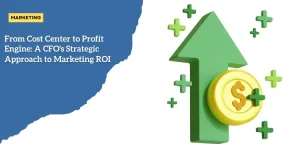Understanding AI Search Impact: A UK Marketer’s Guide to Content Evolution

Anúncios
Overview of Major Changes Affecting UK Digital Marketers in 2024-2025
As we step into 2024, UK digital marketers are bracing for a whirlwind of changes that promise to redefine the landscape of digital marketing.
These shifts are driven by advancements in artificial intelligence (AI) and a move towards a cookieless future, which fundamentally alter traditional marketing strategies.
Anúncios
The urgency for businesses to adapt to these changes can’t be overstated, as those who fail to evolve may find themselves falling behind in an increasingly competitive marketplace.
Impact of AI Search and Cookieless Future on Traditional Marketing Approaches
The introduction of AI, particularly AI-powered search results, represents a double-edged sword for marketers.
Google’s AI Overview feature, for instance, aims to deliver more precise and succinct answers to user queries directly within the search results.
Anúncios
While beneficial for users, this could spell trouble for businesses that depend on organic traffic. According to Gartner, organic traffic could see a significant decline of up to 25% due to AI-driven search results.
This means traditional SEO tactics where the goal is to attract clicks from search engine results pages (SERPs) will need rethinking.
Simultaneously, the phase-out of third-party cookies by 2025 is set to disrupt traditional digital advertising.
Third-party cookies have been essential for delivering personalized ads and tracking user behavior across websites.
The loss of this capability will make ads less effective and potentially more expensive, as seen with Apple’s App Tracking Transparency implementation.
Marketers will need to find new ways to target audiences and measure the effectiveness of their campaigns in this new environment.

The Urgency for UK Businesses to Adapt Their Marketing Strategies
With these major shifts, adaptability is no longer optional but essential.
For UK businesses, this means exploring and integrating alternative content marketing strategies.
Examples include leveraging editorial newsletters, podcasts, and online courses.
These strategies can offset the reduction in both paid and organic traffic by building more direct and meaningful connections with their audience.
-
📰 Editorial Newsletters: In a cookieless world, newsletters can become a powerful tool for engaging audiences and driving traffic. They offer a direct line of communication with customers without relying on search engines or third-party cookies.
-
🎙️ Podcasts: As an emerging content format, podcasts help businesses build brand authority and connect with audiences in a more intimate, engaging manner.
-
🎓 Online Courses: Educational content marketing not only builds trust but also provides valuable knowledge that encourages sales and customer loyalty.
UK businesses must be proactive in embracing these new strategies to remain competitive.
Staying ahead in a rapidly evolving digital landscape means continuously experimenting and refining content marketing approaches.
This dynamic landscape brings both challenges and opportunities, compelling marketers to innovate and adapt.
As we delve deeper into these strategies in upcoming sections, it’s clear that the future belongs to those willing to rethink traditional methods and embrace new content forms.
Understanding AI-Powered Search Results
Introduction to Google’s AI Overview Feature and Its Implications
As digital marketing evolves, AI-powered tools are becoming increasingly prominent, particularly in search engines.
Google’s AI Overview, rolled out in May 2024, is set to revolutionize the search landscape by offering summarized answers to user queries directly within the search results.
This innovative feature is designed to enhance user experience by providing concise, relevant information quickly and efficiently.
However, while this development streamlines search results for users, it poses significant implications for digital marketers.
Businesses that have relied heavily on traditional SEO techniques to drive organic traffic may find their strategies less effective.
With AI summaries occupying prime real estate on search results pages, fewer users may click through to external websites, impacting web traffic and, consequently, potential sales and leads.
Potential 25% Reduction in Organic Traffic
Gartner has predicted that the introduction of AI-powered search features like Google’s AI Overview could result in a 25% reduction in organic traffic over the next two years.
This projection underscores the urgency for businesses to reassess and adapt their SEO strategies.
Reduced organic traffic means fewer opportunities for brand visibility, customer interaction, and conversion through traditional search methods.
As AI-driven search results become more prevalent, the keywords and content that once drove significant organic traffic may lose their potency.
Marketers will need to analyze which types of content and keyword strategies remain effective in the evolving search environment.
This shift will likely involve a greater emphasis on creating high-quality, unique content that adds value beyond what AI summaries can provide, thus incentivizing users to click through to full articles or product pages.
How AI Summaries Are Changing Search Result Presentations
AI summaries transform the presentation of search results by providing detailed snippets directly on the results page.
These summaries are designed to quickly answer users’ queries, which can significantly reduce the need for users to visit external sites.
This evolution in search behavior necessitates a proactive approach from marketers.
To mitigate the effects of declining click-through rates, businesses must ensure their content stands out.
This might involve optimizing content to increase the likelihood of being featured in AI summaries, as well as creating engaging, in-depth content that encourages users to read beyond the initial snippet.
Furthermore, integrating multimedia elements like videos and infographics can make content more appealing and informative, providing a compelling reason for users to explore further.
As the digital marketing landscape continues to shift, those who are flexible and innovative in their content strategies will be best positioned to succeed.
By understanding and adapting to these changes, marketers can maintain their competitive edge and ensure ongoing engagement with their target audiences.
As we navigate these transformations, it’s crucial to remember that other significant changes, such as the phasing out of third-party cookies, are also on the horizon.
The ramifications of these developments will require marketers to explore new strategies and channels to reach their audience effectively.
The Cookieless Future: Impact on Advertising
Timeline and Implications
The digital marketing landscape is on the cusp of a monumental shift with the phase-out of third-party cookies by 2025.
Popular web browsers like Chrome and Firefox are spearheading this transition, which will significantly impact how marketers track and target users online
. Third-party cookies have long been a cornerstone of digital advertising, enabling ad networks to track user behavior across multiple websites and deliver personalized ads accordingly.
Without these cookies, the effectiveness of targeted ads is expected to diminish, making them less personalized and thus less impactful.
This scenario mirrors the 2021 introduction of Apple’s App Tracking Transparency (ATT) feature, which mandated user permission for app tracking, leading to less effective ads on platforms like Facebook.
Consequently, businesses are expected to encounter higher advertising costs as the precision and relevance of their targeting capabilities decrease.
Lessons from Apple’s App Tracking Transparency
Apple’s ATT implementation serves as a cautionary tale for what’s to come.
When Apple required apps to obtain user consent for tracking, it resulted in a significant drop in the reach and effectiveness of targeted advertising.
Social media platforms and advertisers saw an increase in ad costs and a reduction in performance metrics, such as return on ad spend (ROAS).
Marketers will need to pivot toward privacy-centric strategies and explore other data collection methods that abide by stricter regulations.
This could involve first-party data strategies, where businesses gather and leverage data from their own customer interactions rather than relying on third-party intermediaries.
Anticipated Changes in Advertising Costs and Effectiveness
As the digital ecosystem adapts to these changes, there are several expected ramifications for advertising costs and effectiveness:
- Higher Advertising Costs: With the reduced efficacy of personalized targeting, campaign precision will drop, driving up the costs of acquiring new customers.
- Shift in Data Collection: Marketers will have to rely more on first-party data, collected directly through customer interactions on their own platforms, necessitating a robust data infrastructure.
- Emphasis on Quality Content: Content that provides genuine value will become critical in attracting and retaining customers in a world with less effective targeted advertising.
- Exploring Alternatives: There will be a rise in the popularity of alternative marketing strategies such as editorial newsletters, podcasts, and other formats that don’t rely on third-party cookies.
UK businesses must be proactive in adapting their digital marketing strategies to thrive in this evolving environment.
Companies will need to invest in creating high-quality content, building direct relationships with their customers, and exploring innovative ways to gather and use data.
This adaptive approach will ensure businesses stay competitive as they navigate the upcoming challenges and opportunities in the digital marketing landscape.
Editorial Newsletters: The New Content Frontier
As AI-powered search results and the cookieless future change the digital marketing landscape, editorial newsletters are becoming a vital content strategy for UK businesses.
With traditional methods like SEO becoming less effective, newsletters offer a powerful way to engage customers directly.
Benefits of Newsletter Marketing in a Cookieless World
First, newsletters are an excellent alternative source of traffic.
By delivering valuable content directly to subscribers’ inboxes, businesses can sidestep reliance on search engines.
This direct connection helps maintain a steady flow of visitors to the website.
Second, newsletters are crucial for abandoned cart recovery.
By following up with targeted emails, businesses can remind customers about items left in their carts, often including special offers to incentivize completion of the purchase.
Third, newsletters provide a natural context for product promotion. Unlike traditional ads, editorial recommendations feel more organic.
For example, a newsletter from a garden supply shop could recommend tools in the context of seasonal tips, making the promotion feel more like helpful advice than a hard sell.
Strategies for Creating Engaging Editorial Newsletters
Creating an editorial newsletter that resonates with your audience requires thoughtful content planning.
Consider the following strategies:
- Curated Content: Start by featuring a mix of content, such as industry news, tips, and product highlights. This keeps the newsletter informative and engaging.
- Consistency: Send newsletters on a regular schedule, whether it’s weekly, bi-weekly, or monthly. Consistency helps build anticipation and loyalty.
- Personalization: Use subscriber data to tailor content. Personalized recommendations based on past behavior can significantly increase engagement rates.
- Interactive Elements: Include polls, quizzes, or user-generated content to make your newsletters more interactive and engaging.
Leveraging Newsletters for Abandoned Cart Recovery and Product Promotion
For abandoned cart recovery, automated emails can be a game-changer.
By setting up a series of reminders, you can effectively nudge customers to complete their purchases.
To make product promotion more effective, integrate recommendations naturally into your content. Highlight products that relate to the topic you’re discussing.
For instance, a weekly email featuring DIY projects could seamlessly suggest essential tools available in your store.
Editorial newsletters offer a robust way to foster direct and meaningful connections with your audience.
By focusing on high-quality, relevant content, businesses can navigate the challenges of a cookieless and AI-driven world while maintaining customer engagement and driving sales.
Podcasting: Building Brand Authority Through Audio
Podcasting offers UK brands a unique way to establish themselves as industry leaders while reaching an engaged audience.
With more than 15.6 million podcast listeners in the UK, the growing popularity of this medium provides ample opportunities for marketers to enhance their content strategies, build brand authority, and drive sales.
By creating valuable podcast content, businesses can effectively integrate their messages with e-commerce strategies to achieve a cohesive and impactful marketing approach.
Opportunities in the Podcast Landscape
The rising interest in podcasts means that now is the perfect time for UK brands to tap into this trend.
Here are some key opportunities:
-
🌍 Expanding Reach: Podcasts allow brands to connect with listeners during their daily routines, such as commuting, exercising, or working, making it easier to capture attention without competing for screen time.
-
🏆 Establishing Authority: By sharing expert insights and valuable information, podcasts position brands as thought leaders in their industry, which fosters trust and credibility among the audience.
-
🤝 Fostering Community: Engaging content can create a sense of community and loyalty among listeners, leading to long-term brand advocacy.
Strategies for Creating Valuable Podcast Content
To create podcast content that resonates with listeners and drives sales, UK brands should focus on the following strategies:
-
🎯 Identify Niche Topics: Choose topics that align with your brand’s expertise and resonate with your target audience. This could be industry trends, how-to guides, or interviews with experts.
-
🗂️ Plan Logically: Structure each episode with a clear beginning, middle, and end. Include segments like interviews, listener questions, and key takeaways to keep the content dynamic and engaging.
-
📅 Consistency is Key: Release episodes on a regular schedule to build anticipation and maintain listener interest. Consistency helps in retaining and growing the audience.
-
💬 Engage and Interact: Encourage listeners to provide feedback, leave reviews, and engage with your brand on social media. This interaction can help you tailor content to better serve your audience’s needs.
Integrating Podcast Content with E-Commerce Strategies
Seamlessly combining podcasting with e-commerce strategies can turn listeners into loyal customers.
Here’s how:
-
📦 Include Product Mentions: Integrate subtle mentions of your products or services within the episodes. This could be through storytelling, case studies, or expert recommendations.
-
🎁 Create Exclusive Offers: Offer special discount codes exclusively for podcast listeners. This not only drives sales but also allows you to track the effectiveness of your podcasting efforts.
-
🌐 Drive Website Traffic: Direct listeners to your website for more information, additional content, or to make a purchase. Providing show notes with links can be highly effective.
-
🔄 Integrate Across Platforms: Share podcast content on your website, social media, and email newsletters to ensure maximum visibility and reach within your existing customer base.
By strategically leveraging the podcast medium, UK brands can enhance their marketing efforts, build deeper connections with their audience, and ultimately drive sales growth.
Exploring new content formats is essential for navigating the ever-changing digital landscape and sustaining long-term success in an evolving market.
Online Courses: Educational Content Marketing
The digital landscape is shifting rapidly, pushing businesses to explore innovative content strategies.
One such strategy that can build trust and drive sales is the creation of online courses.
Developing Educational Content that Builds Trust and Drives Sales
Online courses offer a unique opportunity to establish authority and provide value to customers.
Imagine an online store selling knitting supplies: by offering a comprehensive course on knitting, the business can teach both basic and advanced techniques.
This educational content not only positions the store as a knowledgeable leader in the industry but also creates an engaged and informed customer base.
For example, an online knitting course can include:
-
🎥 Detailed video tutorials
-
📥 Downloadable patterns
-
💬 Interactive Q&A sessions
-
🛒 A materials list linking back to the store’s products
Each lesson can subtly promote the store’s products, making it easier for students to procure the supplies they need while driving sales.
Strategies for Product Integration within Course Content
Integrating products into course content requires a balance of subtle promotion and useful information.
Here are some strategies to successfully incorporate products without being too sales-focused:
- Materials Lists: Include a materials list with every lesson, linking directly to the products on your site. For instance, a knitting course can have a “Materials Needed” section, which guides students to purchase yarn, needles, and other supplies from your store.
- Demonstrations and Tutorials: Use your products in demonstrations. Showing how to use your products in real-world applications can significantly boost trust and sales.
- Exclusive Discounts: Offer course attendees exclusive discounts on products.This approach not only incentivizes purchases but also rewards loyal customers.
By weaving your products naturally into the learning process, you create a seamless experience that educates while promoting.
Leveraging Multiple Platforms for Course Distribution
To maximize reach and impact, distributing your online courses across multiple platforms is crucial.
Here are some of the top platforms to consider:
| Platform | Description |
|---|---|
| 📺 YouTube | Leverage YouTube’s vast user base by creating a dedicated channel for your courses. Use video SEO techniques to improve discoverability. |
| 🎓 Skillshare | A great platform for reaching learners actively seeking new skills. Tap into an engaged customer base by hosting your courses here. |
| 📘 Udemy | With its powerful search engine and user-friendly interface, Udemy makes it easy for customers to find and enroll in your courses. |
| 🌐 Your Website | Offering courses directly on your website ensures complete control over content and the user experience. |
Conclusion
Embracing online courses as a part of your content strategy not only builds customer trust but also seamlessly promotes your products.
By developing valuable educational content and strategically integrating your products, you can drive both engagement and sales.
As UK businesses navigate this evolving landscape, adopting diverse content strategies will be key to staying competitive and connected with their audience.
Future-Proofing Your Content Strategy
With AI-driven search and the cookieless future transforming digital marketing, UK businesses must innovate to stay competitive.
Building a diverse content portfolio and nurturing customer relationships through owned media channels are vital steps.
Building a Diverse Content Portfolio
Diversifying your content portfolio can mitigate the risks associated with reduced organic and paid traffic.
-
📰 Editorial Newsletters: Focus on creating high-quality editorial newsletters. These newsletters can drive traffic directly to your website by offering valuable, curated content. For example, a gardening shop could launch a weekly newsletter featuring tips and DIY projects, fostering a steady stream of visitors.
-
🎙️ Podcasts: Establish a branded podcast to share expert knowledge and insights. Podcasts are an excellent way to engage with your audience and build brand authority. Interviewing industry experts can attract a loyal listener base, boosting your reach.
-
🎓 Online Courses: Develop educational content relevant to your products. Courses build trust and drive sales by integrating product promotions subtly within the learning material. For instance, a knitting supply store can offer a comprehensive course on knitting techniques, encouraging product purchases through linked materials lists.
Creating Direct Relationships with Customers
Building direct relationships with customers is essential in a cookieless world.
-
📧 Owned Media Channels: Cultivate your owned media channels like email lists, podcasts, and social media platforms. This direct connection allows for personalized marketing and better customer engagement.
-
👥 Community Building: Create online communities where customers can interact, share experiences, and provide feedback. This engagement fosters loyalty and trust, turning customers into brand advocates.
Measuring and Optimising Alternative Content Marketing Approaches
To ensure the effectiveness of your new strategies, continuous measurement and optimization are crucial.
-
📊 Metrics to Track: Focus on engagement metrics such as open rates, click-through rates, and conversion rates for newsletters and courses. For podcasts, monitor downloads, listens, and audience retention.
-
🔄 Iterative Improvements: Use the data collected to refine your content. Experiment with different formats, subjects, and distribution methods to see what resonates best with your audience.
-
💬 Feedback Channels: Incorporate feedback loops into your content marketing. Allow customers to share their thoughts and suggestions, giving you actionable insights for improvement.
By diversifying your content options, fostering direct connections, and continually optimizing approaches, your business can navigate the rapidly evolving digital landscape successfully.






